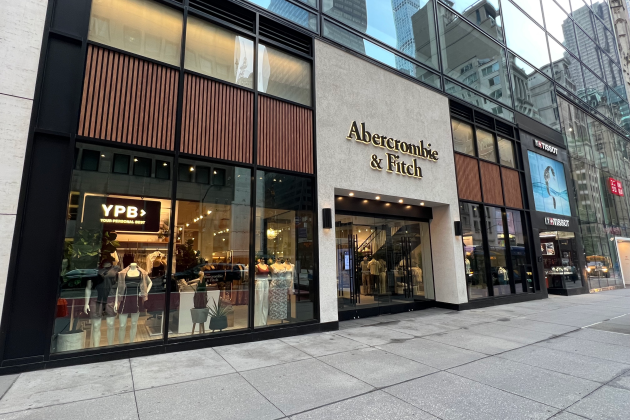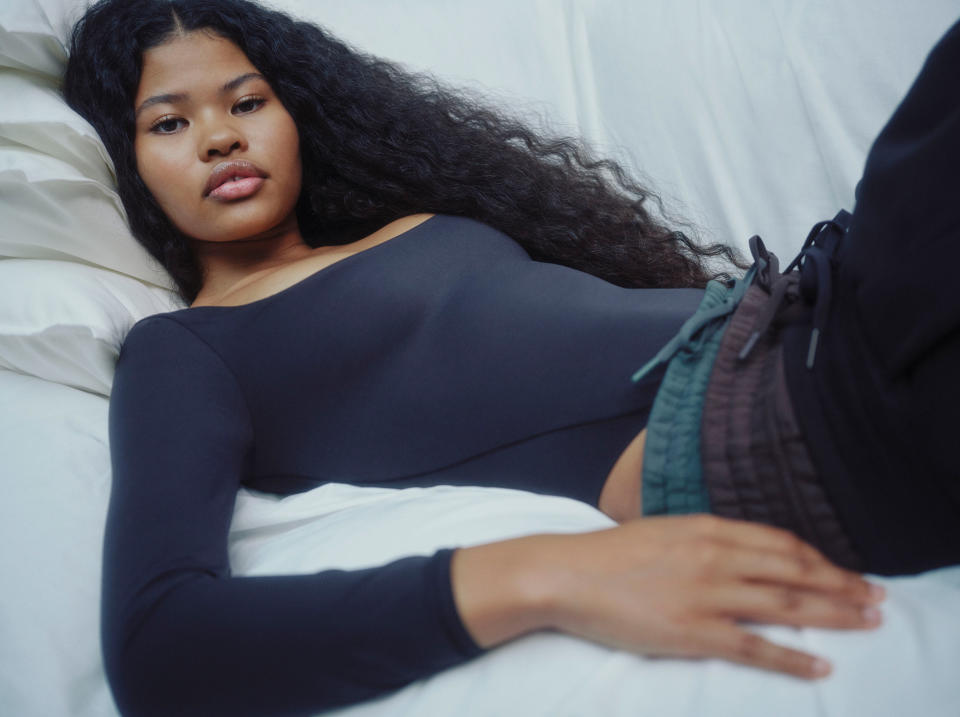Abercrombie & Fitch and Lululemon Raise Guidance After Holiday Gains

Updated at 6:36 P.M. E.T. Jan. 8
More from WWD
Retail Tech Upgrade: Optimum Retailing Brings RFID Technology to Planogram Monitoring
Trend to 'Semiformal' Is Driving Menswear Sales in Department Stores
The winners are still winning.
And although it was a dicey holiday season for many — with price promotions and buy now, pay later programs driving sales — strong brands continued to connect with consumers.
Exhibits A and B on Monday were Abercrombie & Fitch Co. and Lululemon Athletica Inc., which both increased their fourth-quarter outlooks ahead of meeting with investors at the three-day ICR Conference in Orlando, Fla.
For both companies, the fourth-quarter strength marked not a sudden turn, but a steady push higher with a strong focus on retail basics — including the goods on offer and the power of a brand.
A&F led the fashion industry in stock price gains last year, with a 285 percent increase, beating out other retail, fashion, luxury and beauty stocks in a WWD study.
“Consistent with the first three quarters of 2023, our customers responded positively to compelling product assortments and engaging marketing leading us to increase our fourth-quarter and full-year net sales and operating margin outlook,” Fran Horowitz, chief executive officer of A&F, said in a statement. “We expect to deliver fourth quarter net sales growth across regions, led by continued strength in the Americas.”
After years of transformation, A&F now sees fourth-quarter net sales up in the high teens, and an operating margin of around 15 percent. That’s significantly better than the previous forecast that called for net sales to be up low double digits and for an operating margin from 12 to 14 percent.
The revised outlook pushed shares of A&F up 6.3 percent to $96.22 on Monday.
“Each of our brands continued to deliver solid sales growth led by Abercrombie brands,” Horowitz said. “The Abercrombie & Fitch women’s business is expected to achieve its highest-ever fourth-quarter sales complemented by an acceleration in men’s growth. At Hollister brands, we expect to deliver year-over-year fourth-quarter sales growth led by the women’s business. Continuing a trend of profitable growth, we expect Hollister brands will also achieve significant fourth-quarter gross profit rate expansion, enabled by improved product and inventory management.”
The CEO said A&F is tracking ahead of its Always Forward Plan 2025 financial targets.
The plan anticipates annual revenues of $4.1 billion to $4.3 billion, a sustainable annual operating margin rate at or above 8 percent, and focuses on brand growth, leveraging the company’s omnichannel capabilities, and expanding digital penetration and financial discipline.
“Importantly, we expect to exit fiscal 2023 poised for sustainable, profitable sales growth fueled by several years of transformational investments in our brands, people and operating model,” Horowitz said.

Lululemon is also looking to keep building its activewear empire.
The company projected its fourth-quarter revenues would increase by 14 to 15 percent to a range of $3.17 billion to $3.19 billion, where the company had been forecasting sales of $3.14 billion to $3.17 billion.
Lululemon’s forecast for fourth-quarter earnings per share increased to a range of $4.96 to $5 from $4.85 to $4.93.
“Our sales trend remains balanced across channels, categories and geographies, enabling us to raise our guidance for the fourth quarter and close out another strong year,” said Meghan Frank, chief financial officer.
The forecast is part of the normal game of cat-and-mouse the company plays with Wall Street.
Tom Nikic, an analyst at Wedbush, noted, “ Historically, management has not given themselves ‘full credit’ at ICR, leaving themselves room to provide the Street with further upside when they report full Q4 results in March. Specifically, in the past nine years they’ve beaten the ‘ICR guidance’ eight times and came in-line once — meaning they’ve never missed it.”
That has investors gauging how much better the already-strong company will finish out the fiscal year.
Shares of Lululemon were up 0.1 percent to $491.48 as the Street made the calculation.
Regardless of just how well the active companies results stack up to investors’ best guess, the profit picture looks good.
“It appears that consumers are largely shopping the brand at full-price, driving the gross margin upside even amid a highly promotional retail environment,” Nikic said.
American Eagle Outfitters Inc. also boosted its outlook for the fourth quarter saying it expected a low double-digit sales increase where previously it projected a high-single digit gain. The outlook for operating income was also pushed up to about $130 million from a range of $105 million to $115 million.
Jay Schottenstein, executive chairman and CEO, said: “As we build on our strategic priorities, I am incredibly pleased with the momentum we are seeing across brands, which has continued into early January. Looking ahead to 2024, we remain confident in our ability to deliver healthy earnings growth and operating rate improvement as we maintain inventory and promotional discipline, prioritize expense control and benefit from ongoing work on our profit improvement initiative.”
If some companies make it look easy, it’s not. And not every retailer is on the upswing.
Destination XL Group, the country’s largest men’s big and tall retailer, reduced its expectations for the fourth quarter after a sluggish holiday season.
The Canton, Mass.-based company reported that comparable sales for the nine-week holiday period ended Dec. 30 decreased 8.7 percent. Comps in stores were down 7.6 percent, while those online decreased 10.9 percent. Adjusted net income is now expected to be 45 cents to 49 cents a diluted share, down from the earlier projection of 45 cents to 52 cents.
Still, results seemed to be better than investors feared and shares of the company rose 3.5 percent to $4.14.
“Our sales results for the nine-week holiday period were disappointing, but not unexpected,” said Harvey Kanter, president and CEO. “We started the quarter with a high, single-digit negative comp and that is exactly where we ended the holiday period. Lower traffic to both the stores and our website was the primary reason for the decline in sales. Despite the challenges with traffic, we resisted the temptation to stimulate sales by becoming hyper-promotional, which we believe also resulted in softer conversion online. Conversely, staying the course as we continue to rebuild the DXL brand avoided further erosion in gross margin with unnecessary markdowns. This strategy was made possible because of our clean inventory position and our disciplined approach to inventory management.”
Last week, Adobe Analytics said total U.S. e-commerce sales expanded by 4.9 percent during the November-December holiday sales rush — fed by discounts and buy now, pay later programs.
As the season wore on, shoppers seemed to lose some oomph, with the gain slowing from 6 percent in November to 3.7 percent in December.
Best of WWD


